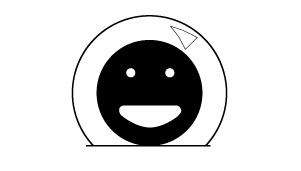Over the past decade, I’ve studied two areas of online development more than any others: project management, and UX strategy. To me, these fields are inextricably linked as part of the planning phase of any project.
In this article I’ll introduce two things:
- A governance framework that walks through the value of UX during various stages of a project.
- Hurdles UX strategists face, and how to overcome them.
Experience Design Process
The following presentation outlines the various documents that can be created during the planning phase of any project. Although it’s rare that all of these documents would be required, a number of them will be useful for every project. It’s a good template to reference on every project to ensure you’re setting the project up for success.
The Experience Design Framework
With the planning phase defined, the role of a UX specialist often gets forgotten. Throughout the project lifecycle, a UX specialist can be invaluable to the success of a project. In this document, I describe how to integrate the role of a UX specialist into every phase of a project, regardless of the project management methodology used.
The UX Project Lifecycle
External UX Hurdles
Hurdle: Risk-Adverse Client
Issue: A Risk-Adverse Client is a common issue that pops up on many projects. The client will push back on any innovative solutions, and will not want to commit to a single solution without testing, written rationale, or other 3rd party support.
Overcoming: The easiest way to overcome this is through upfront stakeholder interviews. If you detect a Risk-Adverse Client, you will need to probe for the root cause of their fear, and may need to perform upfront research or user testing to help assuage the client’s fear. Doing this upfront will do two things: 1) it’ll show you’re taking the client’s concerns seriously 2) it’ll prevent fears from inhibiting innovation further down the project pipeline.
Hurdle: New World Client
Issue: It’s said that in 1492 when Columbus came to America, the native inhabitants were able to look out over the ocean, full of ships, and see nothing but water. They had never seen ships before; in fact, they’d couldn’t even dream of such things. The only way they knew a contingent was on approach was because of the ripples the ships caused in the ocean.
This is the same issue that New World Clients have. It’s known as perceptual blindness, and it’s contested whether or not it actually exists. In this case, New World Clients might push back or make unusual requests because they’re used to having things look, feel, and behave in a certain way and don’t know any other way to think.
Overcoming: Just like the first person to spot the ripples in the water, you need to get the New World Client to see that something new and important is on its way. Show them examples, prototypes, or any other materials that illustrate that what you’re proposing is right. New World Clients need special attention, but much of the attention should be given during the onboarding process.
Hurdle: Big-Eyed Client
Issue: Think kid in a candy store. The Big-Eyed Client wants everything, every feature you could name. A great indicator that you might have a Big-Eyed Client is vendor-itis; if your client has more than five vendors providing niche services on a single site, there’s a good chance you have a Big-Eyed Client. These clients will push for as many features as possible, regardless of the impact on user experience.
Overcoming: Again, an ounce of prevention is better than a pound of cure. In this case, prioritization and focus are key to reining in a Big-Eyed Client. This can be done in a number of ways: by prioritizing user flows, scenarios, user stories, or a feature list. Adaptive Path recounts this process in detail here starting on slide 52
Hurdle: Fox-in-the-Hen-House Client
Issue: This is an example of the Highest Paid Persons Opinion (HIPPO) effect, where a misinformed UX advocate holds an elevated position within an organization and can influence everyone else simply by offering his opinion. In many cases this type of client will offer outdated or misinterpreted information he’s read or heard from others. No client wants to create problems for the user; the Fox-in-the-Hen-House client believes what he’s saying is true, and will benefit the user.
Overcoming: Don’t argue a specific issue—you’ll never win. Even if you end up winning the issue at hand, you’ll have built animosity between yourself and the client. Instead, focus on imbuing the wisdom that a single solution isn’t right all the time, and that different contexts require adapting and manipulating solutions to improve an experience. Even banner ads worked until we realized users were developing banner blindness.
Hurdle: “Can That Be Done?” Client
Issue: In many (if not most) organizations, the client contact you’ll be interacting with will not be familiar with technological constraints. Additionally, he may not be familiar with emerging conventions and new types of tools and technology that are available. The issue this type of client will often create is one of hesitation; he’ll want to pass every innovative idea past their IT department. As we all know, IT departments can be the place where innovative ideas die.
Overcoming: Being able to navigate the pitfalls of an IT department is a skill few people possess. However, if you have access to a seasoned developer (or better, can develop a relationship with one of the developers within the IT department), you can utilize that person to communicate how a solution could be implemented.
Hurdle: Too Many Chefs Client
Issue: When working with clients that are part of larger organizations, there may be a lot of stakeholders, all looking out for their own interests. In many cases, these varying interests conflict with one another, and prioritization of these interests becomes unmanageable.
Overcoming: Rather than trying to accommodate everyone, it’s best to take a two-step approach to preventing this issue:
- Produce a comprehensive content inventory either by auditing the existing site/app, or by developing a new one. This will help identify all the potential stakeholders. Tip: Add a responsibility column to your content inventory and get the client to fill it in. This should outline the business owner of each piece of content that will be created.
- Facilitate a prioritization breakout session with representation from all stakeholders to determine whose content will be considered mandatory on all shared content pages and modules.
Hurdle: Astronaut Client
Issue: The Astronaut Client is a visionary; he doesn’t want to get bogged down in details and knows what he wants when he sees it. This type of client, while open to innovation, is often only open to innovative ideas that mesh with his perception of his vision. A big issue I’ve run into with Astronaut Clients is that they often don’t want to review planning documents, but will reserve feedback for visual design.
Overcoming: A standard onboarding procedure should address this issue. The client should either be educated on the process they’ll be asked to run through, or asked to provide a proxy who can review and provide approval to elements the Astronaut Client doesn’t want to review.
Hurdle: Proxy Client
Issue: A proxy client is generally a person who’s selected to represent the interest of another stakeholder because that stakeholder is too busy or unavailable to interface with you directly. This is an example of “broken telephone,” where an opportunity exists for the proxy client to misinterpret direction from the stakeholder due to a lack of background information.
Overcoming: Strong relationship management skills are required to overcome this issue. The easiest way to work with a Proxy Client is to ensure regular reviews are scheduled with all vested interests. When that is impossible, a governance document may need to be created to have some documentation on what elements the Proxy Client can approve, and what elements the Proxy will take back to the stakeholder for approval. Tip: Never allow the Proxy Client to present your work to the stakeholder. Whenever possible, present your own work.
Summary
If you use the Experience Design Framework, and follow the process laid out in the UX project lifecycle, you’ll experience far fewer hurdles. If you’re not able to do this for whatever reason, you’re likely to face some of these hurdles.
You’re now equipped with the tools you’ll need to combat the hurdles you may face from these types of clients. That said, you may face combination clients who have traits from several of the above types. If this is the case, you need to consider both your well being and your organization’s well being.
Ask yourself, “Is this work going to be worth the education and relationship management required to transform this client?” I’ve phrased this question deliberately, because I’m assuming you wouldn’t want to simply capitulate to every client whim, and you wouldn’t want to invest in a client that isn’t willing to produce quality work.
If it is worth the time and effort required, you may need to schedule an education session. Earlier this year I was hired as a consultant for a major Canadian financial institution where I was able to conduct such a workshop. It uncovered major organizational issues that couldn’t be corrected immediately, but caused stakeholders to be cognizant of their potential biases. These issues were also documented and raised to the corporate HR lead and the executive team. I was also invited to give a high-level presentation to the board of directors, who will be considering several proposals my team made.
This is all to say, if you’re a digital shop who’s working with a client, you have options to make your relationship much more valuable and fun. If you’re a marketer, consider hiring an agency that is capable of offering you the direction you need. If you’re hearing “yes” to all your ideas, or are being required to provide more direction that you believe should be required, you probably have an agency that doesn’t understand the nuances of UX strategy. If this is the case, consider hiring your own consultant to provide the project with guidance, or consider finding an alternate agency that can.
Do you work for an agency, or are you a marketer? I’m interested in knowing what you think.
Please comment below.













